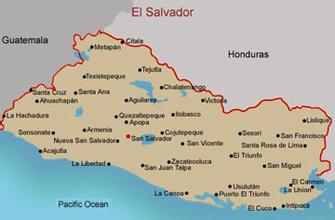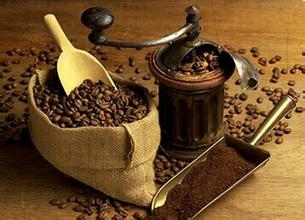Introduction to Fine Coffee Producing Area: Coffee Bean Producing Area of Central and South America

Coffee beans are the essential raw materials for making coffee, and there are more coffee bean producing areas, while some continents write some less. The following editor will introduce to you the five major coffee bean producing areas in Central and South America.
1. Mexico
Coffee production is concentrated in the south near Guatemala, with mountains running through the east and west, making its mountains tilted, making it an ideal terrain for coffee cultivation. Coffee cultivation is still common.
According to the order, the highland is classified into three kinds of high-yield coffee: Arudora, Prima, Rabad and Barnabad. Coffee beans range in size from medium to large, with a good appearance and aroma.
two。 Jamaica
The island of Jamaica, famous for its coffee, is a small republic in the Caribbean. The slopes of the mountains that run through the island are the main producers of Jamaican coffee. The most famous is Blue Mountain Blue Mountain, located in the northeast of the capital Kingston. The beautiful Blue Mountain Lianfeng is an excellent place for coffee cultivation. It is named after the highest peak of 2256 meters Blue Mountain system, which is known as the best coffee "Blue Mountain Coffee". The granules are of good quality and harmonious taste, with appropriate acidity, bitterness, aroma, mellow and sweetness. They are recognized as the best all over the world. They are usually accompanied by exquisite factory logos and warranties, and then put into large barrels similar to large beer barrels for export. There are NO.1, NO.2, NO.3, beans and other grades.
The island of Jamaica is famous for its coffee and has become the topic of the world.
Blue Mountain Coffee is produced in the Blue Mountains of western Jamaica, hence its name. Blue Mountain is a mountain range with an elevation of 2256 meters. Coffee trees are planted on a steep hillside about 1000 meters above sea level. The annual output of Blue Mountain Coffee is only about 700 tons. Blue Mountain coffee beans are full in shape and slightly bigger than ordinary beans. Sour, fragrant, mellow, sweet taste is uniform and strong, slightly bitter taste, harmonious taste, excellent flavor, suitable for individual coffee. Due to the low output, most of the products sold on the market are "special blue mountains", that is, mixed coffee with other coffee beans at the bottom of the blue mountains.
3. Brazil
It can be called the "coffee continent" of the world's largest coffee producer and exporter. As about ten states in the vast territory adopt mass production, in order to make up for the regional gap and quality gap, Brazil sets its own grading benchmark in order to stabilize the quality.
The quality of the production is very good, since ancient times as an indispensable blend of coffee beans, processing is also easier to carry out, widely accepted by the world. In particular, coffee beans that meet the four conditions of Brazil, Santos, quality similar to NO.2, Screen18, Screen19, soft taste and these four conditions are the most well received and most widely used. Brazil is the most important coffee producing area in the world, accounting for 1x3 of the total output in the world. Brazil has 10 states producing coffee beans. Due to differences in region and climate, the quality of Brazilian coffee beans is inevitably intermingled. Therefore, Brazilian coffee beans are divided into No.1-No.3,Screen 18 and screen 19 according to the grade, so that the quality is neat and stable, and the processing and roasting can also have a better effect.
Brazilian coffee is medium-fragrant, sour and mellow, has a mild bitter taste and is famous for its smooth taste. Among all kinds of Brazilian coffee varieties, Santos Coffee is more famous. Santos Coffee can also be called Bourbon Santos. Bourbon Santos is of good quality and has a round taste with moderate acidity and strong sweetness. Bourbon Santos is considered to be an indispensable ingredient for mixed coffee.
4. Colombia
Colombia is the second largest coffee producer in the world after Brazil.
The world's second largest coffee producer after Brazil. Is the leader in the country that produces "Columbia mild". The name of origin has become a well-known name for coffee, such as Medning, Manizarez, Bogota, Almenia and so on. Coffee beans are light green and large-grained, and according to their unique thick flavor, they are very suitable for both pure coffee and mixing.
Colombia is the second largest coffee producer in the world, accounting for 12% of the world's total output, second only to Brazil and the largest producer of Colombian Mild. Colombian coffee trees are planted in the highlands and have a small cultivated area in order to take care of harvesting. The harvested coffee beans are refined with water washing (wet method). Colombian coffee beans are of neat quality and can be called the standard beans among coffee beans. Colombian coffee beans are large in shape, light green, with a special thick flavor, and are widely favored for their rich and unique aroma.
The taste is sweet in the acid and low in bitterness, which can lead to multi-level flavor with the different degree of baking. Medium baking gives full play to the sweetness of beans, with mellow acidity and bitterness; deep baking increases bitterness, but the sweetness still doesn't disappear much. Generally speaking, medium-deep roasting will make the taste more personalized, not only as a single drink, but also suitable for mixed coffee.
5. Hawaii
Kona Coffee
The coffee beans used in Kona Coffee from Hawaii are grown on volcanic terrain. At the same time, there is a high density of artificial farming, so each bean can be said to be spoiled, the price is naturally expensive, second only to the Blue Mountains. Hawaiian Kona beans are evenly shaped and have a strong sour and sweet taste. The palate is moist and smooth. Moderate baking makes beans sour, while deep baking aggravates both bitterness and mellow taste. This coffee bean grows from sea level to 6000 feet.
Gourmet coffee generally grows only in mountain areas, growing at a height of about 4000 to 6000 feet requires annual rainfall of about 80 feet and is obvious in dry and wet seasons. The soil for growing gourmet coffee beans should be very fertile and usually have volcanic rock, and light cloudy or cloudy weather is also necessary in the growing environment of high-quality coffee beans. The daytime temperature needs 15-20 ℃. This climate results in a longer growth process, a unique growth and climatic environment that leads to a stronger coffee flavor.
Source:
China imported Coffee beans Trading Network
Important Notice :
前街咖啡 FrontStreet Coffee has moved to new addredd:
FrontStreet Coffee Address: 315,Donghua East Road,GuangZhou
Tel:020 38364473
- Prev

World Coffee Science: understanding the Historical and Cultural Source of World Coffee Coffee must see the knowledge points
The Discovery and spread of Coffee how was coffee discovered? When people taste mellow coffee, they can't help but ask such questions. According to Roth de Neroy, a Roman linguist, around the sixth century AD, an Arab shepherd named Caldai was very excited and excited to see every goat when he went to graze on the grasslands of Ethiopia. It made him
- Next

Coffee brewing method: pressure filter brewing coffee shows the quality and characteristics of coffee beans
Mr. Mr.Kramer, founder of the European Special Coffee Association and founder of the professional standards for baristas of the European Special Coffee Association, mentioned when talking about the use of French filter pots to make coffee, this kind of coffee pot is widely used in coffee shops and families to make quality coffee drinks. In China, the French filter press is also known as the tea maker, which is easy to use. In-process
Related
- What is the meaning of lactic acid fermentation with coffee bean treatment?
- How to judge the state of foam by sound?
- How does the latte pull out the unicorn pattern? Come to get for a little trick to improve the flower pull!
- Will flower pulling affect the taste of the latte?
- Do you know the history of coffee?
- The difference between honey treatment and sun washing what is raisin honey treatment?
- What kind of milk can a novice use to make coffee foam to keep the foam longer? The correct method and skills of milking tutorial sharing
- Why do washed coffee beans taste sour? Flavor characteristics of washed Coffee
- Introduction to the skill of how to practice the size and height of water injection around the circle of hand-brewed coffee
- How do beginners practice coffee flower drawing from scratch?

